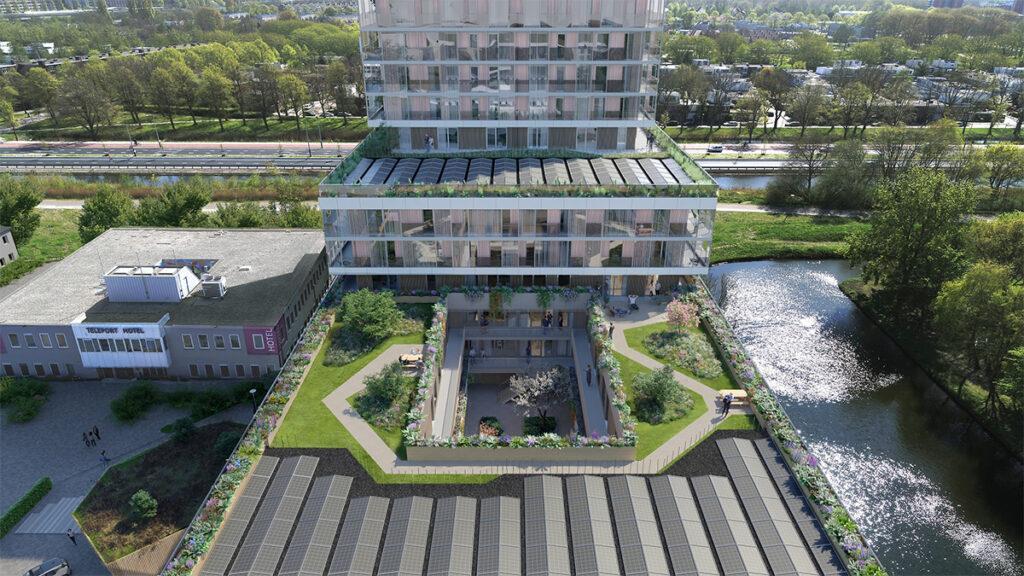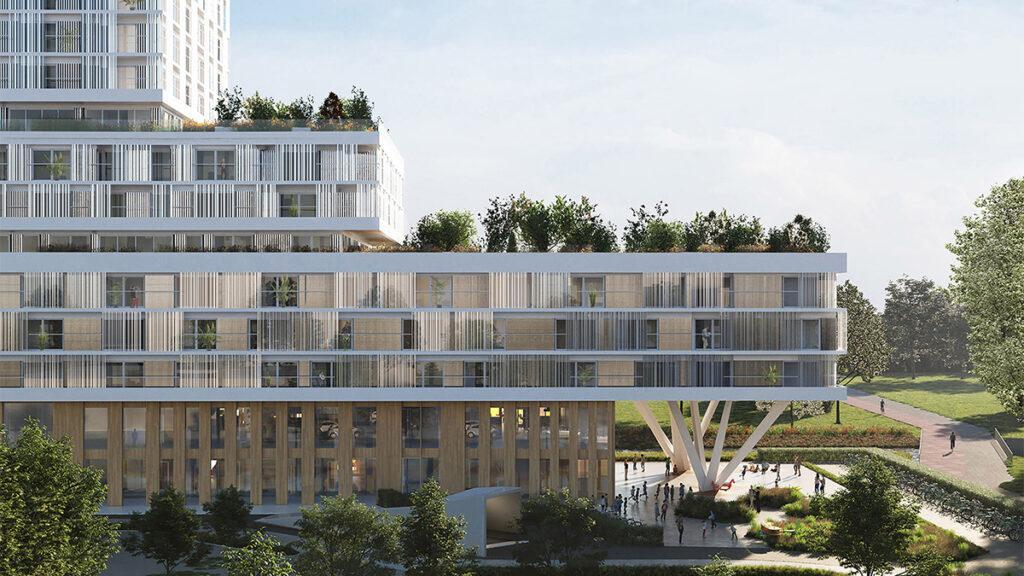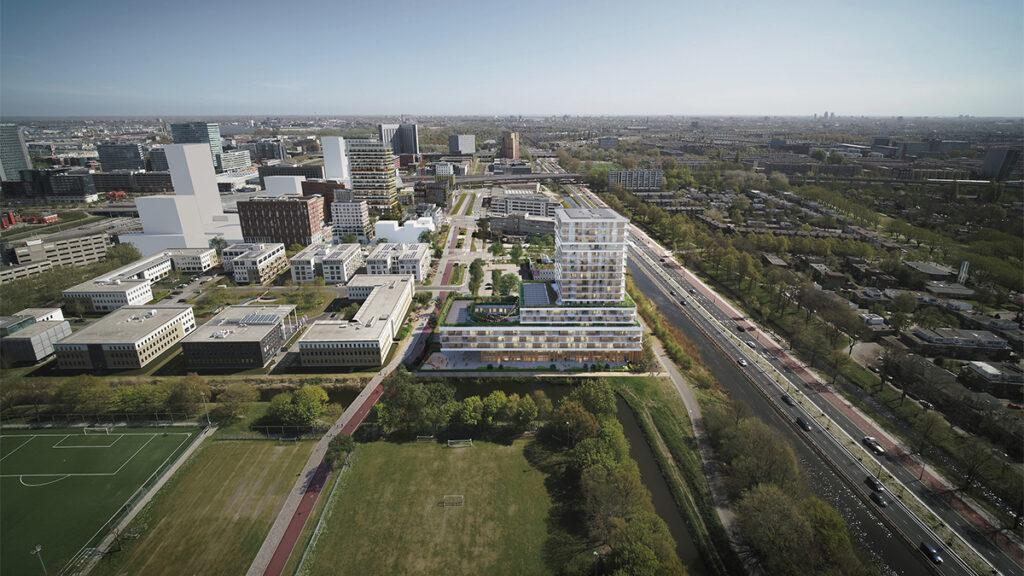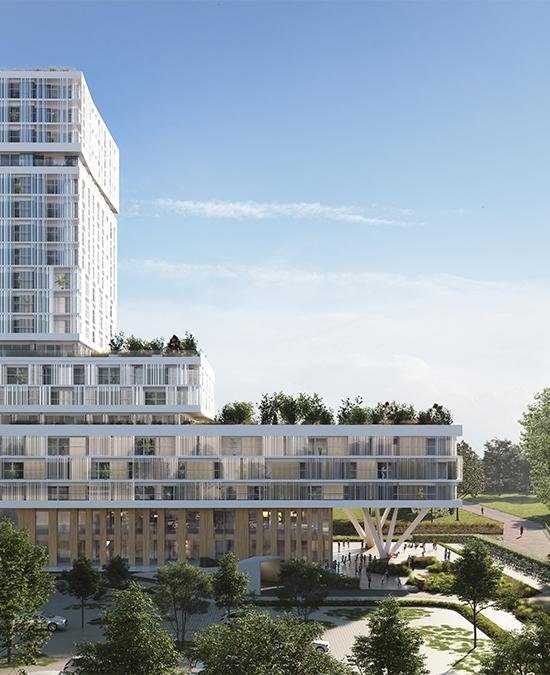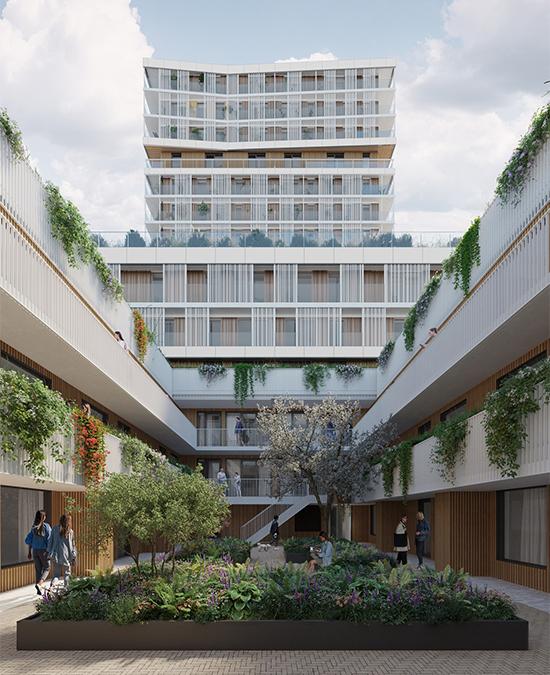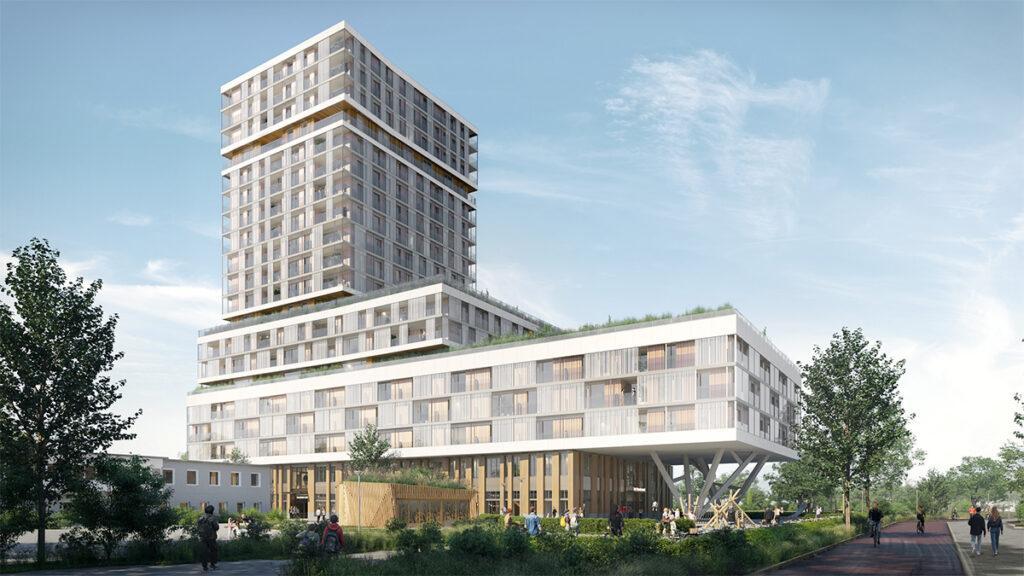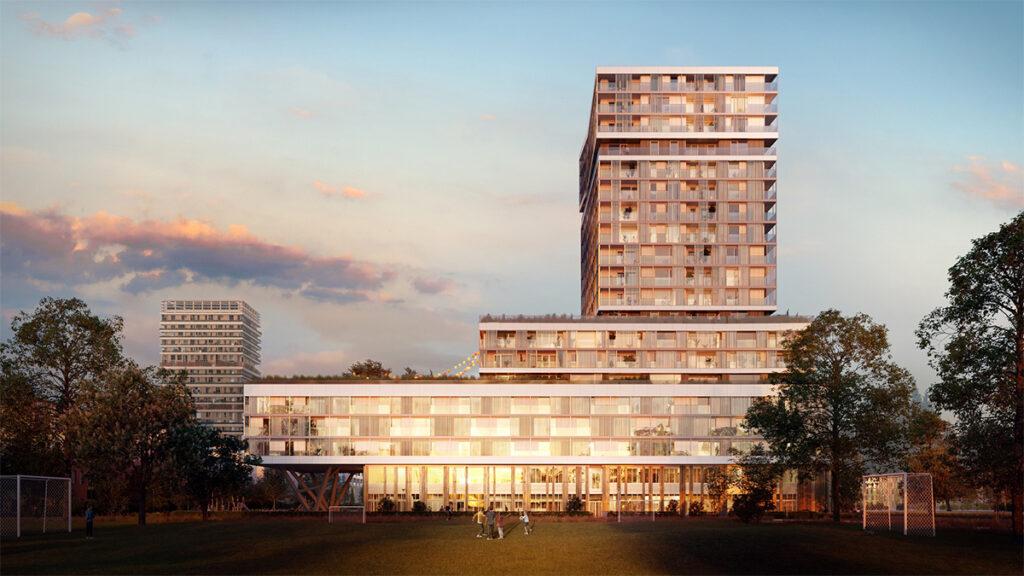The best of both worlds
Who wouldn’t want to play a part in designing their own neighbourhood? The future residents of the pioneering Floating Gardens project get to do this. The new, sustainable complex in Amsterdam not only has a school, but also sets out to teach others what sustainable living is all about.
It’s going to be a special place. One that highlights the contrast between small community and big city – and offers the best of both worlds: lots of green spaces, places to meet and talk, and vibrant city living. The project is also intended as a driver of transformation for a new neighbourhood. We are talking about Floating Gardens, a new complex in Amsterdam designed by Orange Architects. It is being built in Sloterdijk, on the site of the existing SITA office. And the architects are convinced: “With Floating Gardens, we are creating a place where pioneers can actively contribute to the development of their building and their neighbourhood.
The complex was designed on behalf of Synchroon, the real estate developer who had a hand in Powerhouse Company’s fabulous new building “5-Tracks” in Breda. The Floating Gardens project came about in partnership with the city and is yet another exciting new build that is set to enrich Amsterdam. After all, a complex with floating single-family houses is also on the agenda there. As is the extravagant expansion of and around the Fashion House.
Transformation of a neighbourhood
The construction machinery for Floating Gardens is already at work. Plans for the project envisage 190 apartments and an all-in-one school housed in the building plinth. The zone around Sloterdijk railway station is rapidly evolving into a mixed residential and office quarter. Sloterdijk Centre will form the heart of a large city district called Haven-Stad.
Sloterdijk, once a village, has long been a part of Amsterdam, located approximately three kilometres northwest of the city centre. It currently features an international, but mono-functional office quarter, in combination with surprisingly calm areas such as Orlyplein and the BRET garden. Another distinctive feature is its location in the heart of the green wedge of the Bretten zone.
Mixed use in a green space
The development zone is situated between Westerpark and Bretten nature reserve. This means that Sloterdijk has the potential to become a fully-fledged part of this green network as it offers space for new initiatives. And this potential is now going to be harnessed, thanks to the development of a future-oriented urban district. A neighbourhood with relaxing green spaces and attractive mixed use.
The Floating Gardens complex will lend Sloterdijk an unmistakable “face”. And its all-in-one school aims to fulfil a special purpose: to aid the transformation into a mixed residential and office quarter.
Quality of life on multiple levels
Because of its location on the outskirts of the Bretten zone, particular attention has been paid to integrating the project into the landscape and to green rooftop gardens. This is why the building is deliberately made up of layers of different sizes. These allow the creation of green areas on different levels, to improve both biodiversity in the city and the well-being of residents. In addition, a large overhang on the entrance side of the school functions as a spacious lobby for the entrance to the park.
The building is deliberately made up of layers of different sizes, thereby allowing green rooftop gardens to be created at various levels.
Orange Architects
The residents of the first residential building form a select group. They are to become catalysts for Sloterdijk’s transformation, so to speak. A programme is being developed for this group that focuses on three factors: sustainability, shared facilities and inspiration.
Common living room
“Sharing is the latest craze!” says Orange Architects. In this spirit, the Living Room is a centrepiece of the new building. In addition to the green outdoor area, this shared space will be open to users as an informal meeting place. Here, Floating Gardens residents will be able to read the newspaper, work on their laptops, eat with neighbours or friends, or simply enjoy a drink.
Feel-good zone: Floating Gardens
The team from Orange Architects describes the idea behind it like this: “The Living Room creates a sense of community and vibrancy inside the building. It ensures that the mental living space of residents is bigger than that of their own studio apartment.” The stated aim: the best possible quality of life.
Sustainability is a major factor in the concept for the 22,500 m² complex. The rooftop gardens are therefore an essential element. As is the choice of materials used for the building. The entire façade is designed to create sustainable living space.
Harnessing the power of the sun
The horizontal façade strips consist of white solar panels that function as fixed sunshade devices. Combined with the solar energy system on the roof, these will contribute to ensuring that Floating Gardens meets the BENG requirements for nearly energy-neutral buildings.
A good outlook
Vertical, printed glass panels provide protection from noise and wind. The large number of inviting outdoor areas also shows all the signs of very comfortable living. Wooden cladding and planters will give Floating Gardens a green, natural look. Orange Architects’ design has everything that forward-looking users want. And these are exactly who are needed when a neighbourhood is to be transformed.
Text: Elisabeth Schneyder
Images: Orange Architects / VERO Digital, A2 Studio
